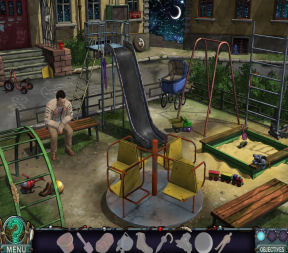|
Casual Companions: Teams By Becky Waxman This is the third installment in a series about companionship in casual games. Part One discusses the role of sidekicks, and Part Two describes the role of mentors. A few casual games expand the concept of companionship to produce what qualifies as a team. Teams consist of three or more individuals working together to accomplish an agreed-upon goal. Teams can be small sometimes but may grow, with characters joining as the story progresses. Once a character has joined a team, s/he acts as a volunteer. She'll need to be befriended (perhaps even flattered) but she works for free. Teams usually travel together. Each member contributes a different skill set or specialized knowledge or adds a distinct personality to the mix. Below are casual games that field memorable teams that enhance the story and the gameplay. In three of these games -- Puzzle Bots, The Dark Hills of Cherai: Regal Scepter, and James Patterson Women's Murder Club: A Darker Shade of Grey -- you assume the role of various team members during gameplay. In the remaining three games -- Robin's Quest: A Legend Born, Fiction Fixers: Curse of Oz, and Foreign Dreams -- the protagonist is the only playable character. As the story progresses, you must decide when to call on different team members to use their abilities or to access their knowledge, possessions, or dreams.
*Note: I'm aware that many gamers partner with their children to play casual games. I've put an asterisk in front of each game that is more appropriate for teens and up, rather than young children. Further note -- all the games below feature a point-and-click interface and, with the exception of Puzzle Bots, use a first person perspective. A Bot of One's Own
Puzzle Bots is an adventure lite/casual adventure published by Wadjet Eye Games, the developers of Emerald City Confidential and the Blackwell series of adventure games. The story centers on a team of American robotics inventors: Yuriko the overachiever, Victor the malcontent, overly-conscientious Theo, disruptive Astrid, and Zander -- a surprisingly handsome geek. Each inventor is working on an individual miniature bot. The bots are about an inch in height, and each exhibits a particular skill: Hero picks up and carries items, Ibi swims underwater, Ultrabot pushes and pulls heavy objects, Kelvin wields a flamethrower, and Bombchelle tosses incendiary devices. Each bot has a personality that partially mirrors that of his/her inventor. The bots "live" in a fishbowl arrangement from which they soon escape, resulting in a series of increasingly dangerous escapades. The bots are tiny enough to get into (and out of) all kinds of things in the research lab and its outdoor environs. Affecting things requires imaginative combinations of their abilities because so much that is around them is (to them) gigantic. Since Hero can pick up items and Ibi can tow them under water, the game contains several inventory item challenges. You also must determine which items in the environment should be moved, heated, or blown up.
There's a lot of character interaction in this game, involving both the human team (lighthearted dialog) and the bot team (the bots make sounds, which are interpreted in subtitle form). Puzzle Bots is well written and enhanced by high quality voiceovers. All the personalities, personal motivations, and abilities in this game make it quite complex. This is belied by the cartoon-like, pastel shaded graphics and the miniature environments that seem cunning and cute. Dastardly is a more accurate game description, especially because the challenges are novel, multi-stepped, and sometimes difficult. Odd things are going on at the facility (in addition to the bots escaping and adventuring on their own) and by the end, the team of bots and the team of humans may need to figure out how to function as one (very large) team. Tara, Maya and Rahul's Excellent Adventure
India is the backdrop for this unusual story as three young people attempt to stop the return of a traitorous court magician. Cousins Tara, Maya and Rahul set out on a quest to recover a dead king's scepter and twelve magical stones of power. An additional team member (of sorts) is the former King of Cherai, who functions as a ghostly mentor. Though they have a common goal, Tara, Maya and Rahul take separate paths through the gameworld. You can switch between them at any time by clicking on tabs at the top of the screen. Not counting the opening and closing cut scenes (which are voiced), the young people's chief source of interaction is through the objects they collect and then exchange at a common meeting place. The characters are combining their efforts, yet are traveling alone; this creates both a sense of constant companionship and an aura of vulnerability. The cousins keep journals describing the journey. Rahul's diary offers glimmers of personality because he seems to be enjoying himself hugely, while the young women are more cautious. Tara and Maya's writing style is virtually identical. The team's determination and the seriousness of the challenges they face are portrayed clearly in the writing. But their character growth would have been enhanced if each journal had revealed more personal flair or engaging quirks.
Regal Scepter's gameworld is large, lavish, and eerily lit. The whole game takes place at night, with darkness and jewel tones brightened by moonlight and torchlight. The interactive map is a welcome feature. It contains hotlinks to all the areas in the gameworld and significantly reduces back-and-forthing. Challenges in this Interactive Hidden Object Game consist of Find Lists, inventory puzzles, and mini-games. The end game challenge, involving matching symbols, is fairly intricate and also timed. The three characters and their separate paths give Regal Scepter an unusual degree of complexity, as you need to keep track of all three inventories and remember which environment, traveled by which character, might require a particular item. The ghost of the dead king helpfully suggests where to use items (sometimes he's a bit too helpful). The game's difficulty level feature allows you to reduce, though not eliminate, the king's assistance. The Clubbers
A Darker Shade of Grey starts out as an investigation into the death of a young cadet in an American military academy, and progresses into the realms of police procedure, military shenanigans, and political conspiracy. This is an adventure-lite/casual adventure designed by Jane Jensen, of Gabriel Knight and Gray Matter fame. The Women's Murder Club is a group of professionals who regularly meet over lunch. The Clubber's collegiality is evident in their lunchtime banter as they discuss their current cases. Their longstanding friendship results in frequent teaming up, even if it means stepping out of the routine and into situations fraught with danger.
The protagonist in A Darker Shade of Grey is Detective Lindsay Boxer. Active members of the team in this game are Dr. Claire Washburn (medical examiner) and Cindy Thomas (journalist). Lindsay contributes her investigative abilities, natural curiosity, and talent with a gun. Claire furthers the case with her forensic medical skills. Cindy goes undercover in the military academy to keep an eye out for information that Lindsey can't gain through legal means. (The characters are not voiced.) A Darker Shade of Grey's ending surprised me, partly because it seemed so unlikely. The story would have been tighter if the background of the bad guys had been better established. One character in particular reveals no motivation for his final action in the game. Environments are colorful and naturalistically rendered. There are a few Hidden Object-like challenges of the "find the multiple strips of shredded paper" variety, but the bulk of the gameplay involves investigation, questioning witnesses, examining corpses, using inventory items, observing patterns, messing about with codes, and using the lab to analyze chemical samples. This is the only game in this editorial where the skills of the team are based on "real life" career paths. As such, it's closer to the type of team concept that non-gamers will be familiar with -- particularly television shows like Law & Order, which it somewhat resembles. Band of Merry Men
Based on the British legends of Robin Hood, this Interactive Hidden Object Game provides a twist -- Robin is a woman, trying to right Prince John's wrongs while springing her husband from jail. As a female Robin Hood, you explore the medieval town of Nottingham and surroundings. The graphics are colorful and intriguingly lit, with a three-dimensional quality. They're enhanced by ambient animations and lively Renaissance background music. The characters in Robin's Quest have a cartoon-like appearance. You frequently interact with various villagers and villains (the game is partially voiced). Most of the pickpockets and vagrants...err, jokesters and fun-loving rule breakers...who join you on your quest have already run afoul of Prince John. They've been pardoned for their crimes, but the pardons have been torn into pieces, which you must find and restore.
With pardons restored, each band member contributes a skill -- for instance, Little John employs his great strength, Will Scarlett moves stealthily, Maid Marion (as a child) supplies charm, and Alan-A-Dale sings enemies to sleep. (A tremendously useful skill, that. Why isn't Alan-A-Dale already running the place?) Robin's Quest provides inventory challenges, mini-games, and Hidden Object Find Lists, and you must match each teammate's ability to the appropriate situation. Everyone on the team contributes something to satisfying the goal of revenge...err, the goal of freeing Nottingham from the clutches of its greedy aristocrats and the corrupt Prince John. Party of Misfits
In Fiction Fixers, you assume the role of a special agent and use a technology called "The Fictionizer," to enter classic stories. Your mission is to seek out and destroy the dastardly Victor Vile -- a magician/engineer who has learned to manipulate the power of fictional worlds. Fiction Fixers follows the story from L. Frank Baum's famous novel -- The Wonderful Wizard of Oz -- fairly closely, with variations resulting from Vile's nasty interventions. You visit Kansas and join Dorothy and Toto (her little dog) just as the tornado blows in. Upon arriving in the fantasy realm of Oz, the group expands to include the Scarecrow, the Tinman and the Lion. Most gamers know the characters from the book and/or the film based on the book, so Fiction Fixers doesn't spend a lot of time introducing them. Each team member has a distinct ability: for example, the Scarecrow frightens birds, the Tinman wields his ax, and the Lion leaps and slashes. Victor Vile pops in to mock and threaten whenever he feels like scaring the bejeebers out of this odd team. The game is fully voiced, which adds nuance to the various personalities.
The colorful, surreal environments are well suited to a journey along the yellow brick road. Challenges in this Interactive Hidden Object Game include traditional Find Lists, as well as piecemeal items sometimes strewn across several screens. The game also provides mini-games, pattern and symbol analysis puzzles, sliding block puzzles, and inventory challenges. Unlike the other teams described in this editorial, where competence is (pretty much) assumed, each of the companions in Fiction Fixers is broken or somehow incomplete. Dorothy has lost her home, the Scarecrow is brainless, the Tinman lacks a heart, and the Lion is short on courage. (Toto is the only companion who seems confident and undismayed.) In other words, your team starts out as a bunch of self-doubting losers and you hope that, by triumphing over various obstacles, they'll somehow turn out to be heroes. The journey refines and develops them as they seek the Wizard and assist you in ridding Oz of all that is Vile. The Gang's All Here (In Your Head)
This is an odd little game. In it, you assume the role of a young woman named Maya, who has the psychic ability to enter another person's dreams and analyze the events and symbols in them. Her friend Victor begs her to help him stop the bizarre nightmares that have been plaguing him. Maya enters into the landscape of Victor's dreams, where she locates objects that might explain what's happening in his subconscious mind. While there, Maya is frequently confronted by the silent specter of a small girl with zombie eyes, dressed in pajamas, and carrying a stuffed rabbit. It becomes clear that Victor's nightmares are somehow connected to childhood memories of his brother, Eric. Maya is soon wandering through Eric's dreams as well, and is surprised to find that they are inhabited by the same strange little girl. (The game is unvoiced.)
The environments in Foreign Dreams are surreal landscapes with a hand drawn effect. The nightmares are locations from Victor's past. For instance, in one dream the living room from Victor's childhood home stands in the midst of a field, with neon lights shining through broken glass and cracked stones. Objects in this Interactive Hidden Object Game are portrayed as grayed-out shapes, the matches for which may be scattered over two or three different locations. In addition to the object searching challenges, the game contains inventory challenges and a handful of pattern analysis puzzles and mini-games. How these characters function as a team is one of the story's mysteries, and remains hidden for most of the game. The twist ending reveals (almost) all. Foreign Dreams is rather short, but when the mystery is solved, a replay is recommended because, in hindsight, the surreal images all start to make sense. A team effort involving the paranormal, dream landscapes, and past traumas is a promising combination -- I'd like to see it explored more fully in a later game. Why Join a Team? Establishing and cultivating a team in a casual game can be rewarding, though tricky. It adds a layer of interest -- differences of personality are more sharply contrasted when characters spend a lot of time together on-screen. Opportunities increase for empathizing with the characters as the gamer observes incidents of team cooperation, maturation, or self-sacrifice. Teams also add a layer of challenge -- which member should contribute his/her skill in certain situations? Which member possesses the right object, and will s/he reach the point where it can be used? Relationships and strategies become more complex. Portraying a cast of several steadfast companions (instead of the protagonist on her own) requires gifted characterization, especially within the constraints of a short casual game. I don't think it's a coincidence that many of the teams mentioned above are based on characters drawn from popular novels or legendary heroes (some of which have also appeared in films or television shows). If the characters already "live" outside the game, it's easier to take their known personalities and give them appropriate abilities so that they can contribute to the goal within the game. Games that don't supply access to all the team members simultaneously -- but allow you instead to play each team member at a different stage of the game -- eliminate much of the dialog between team members and some of the camaraderie, but instead portray each team member in more depth. This reduces complexity somewhat, while still imparting a sense of the multiple personalities in the game. But this also reduces the feeling of a team on a journey together or quest. If it's done well, it forces the gamer to think differently while assuming each different role, providing unusual variety for a casual game. Coming up Next Look to this space to see more discussion of casual games. Next up: Misty-Eyed for Myst? Casual Compensations. copyright © 2012 GameBoomers |
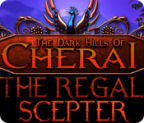

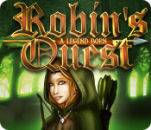
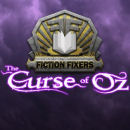
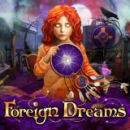
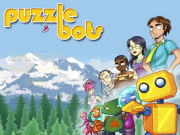 Puzzle
Bots
Puzzle
Bots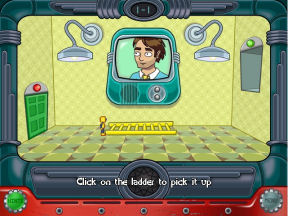
 The
Dark Hills of Cherai 2: Regal Scepter
The
Dark Hills of Cherai 2: Regal Scepter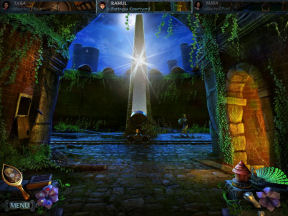
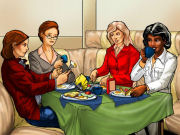 *James
Patterson Women's Murder Club: A Darker Shade of Grey
*James
Patterson Women's Murder Club: A Darker Shade of Grey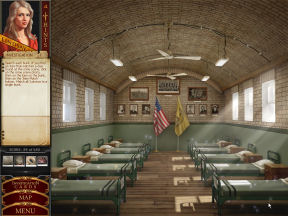
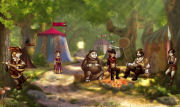 Robin's
Quest: A Legend Born
Robin's
Quest: A Legend Born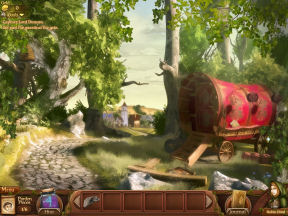
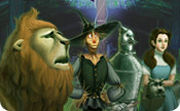 Fiction
Fixers: Curse of Oz
Fiction
Fixers: Curse of Oz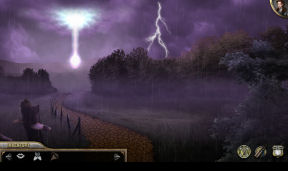
 *Foreign
Dreams
*Foreign
Dreams